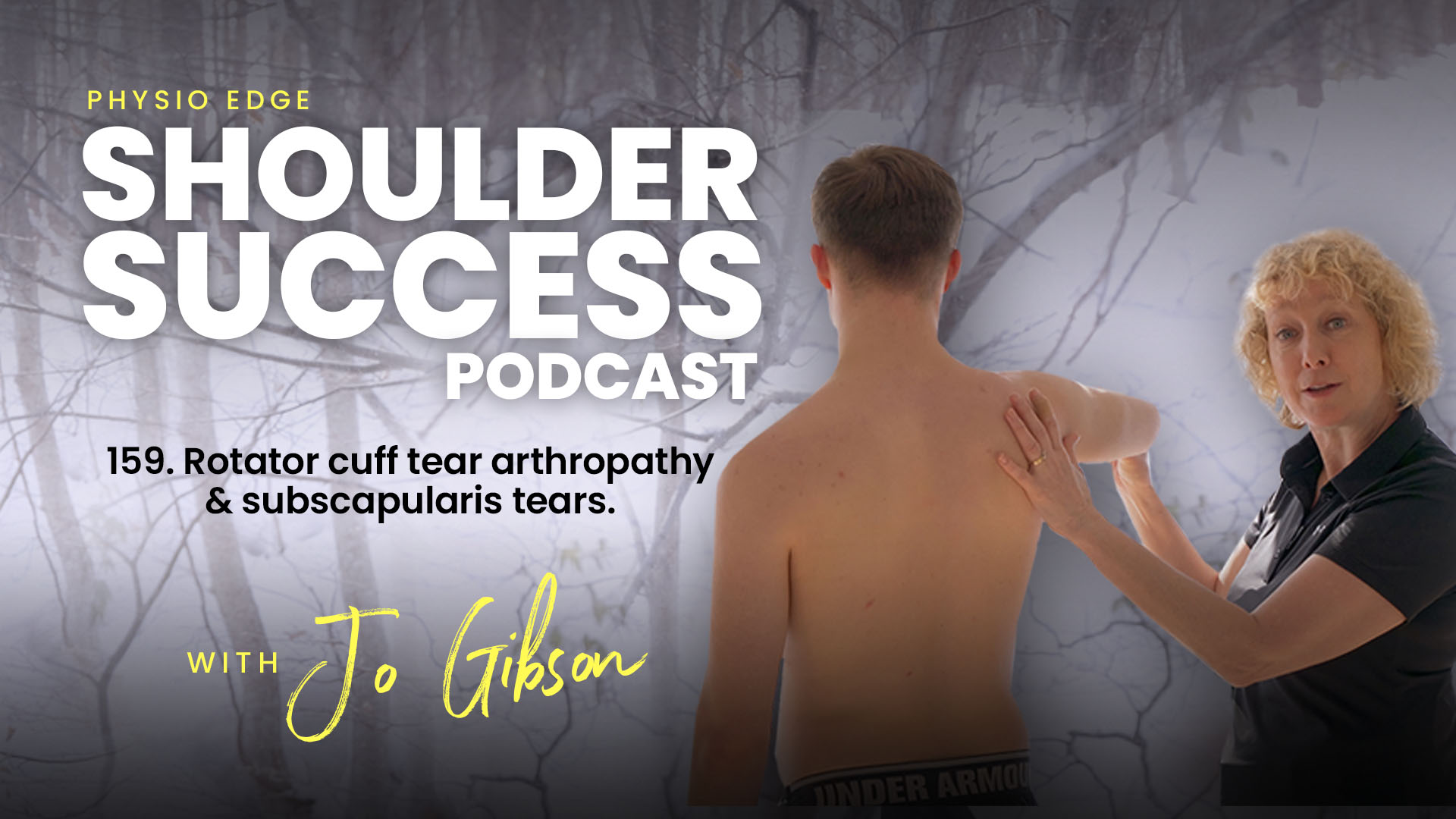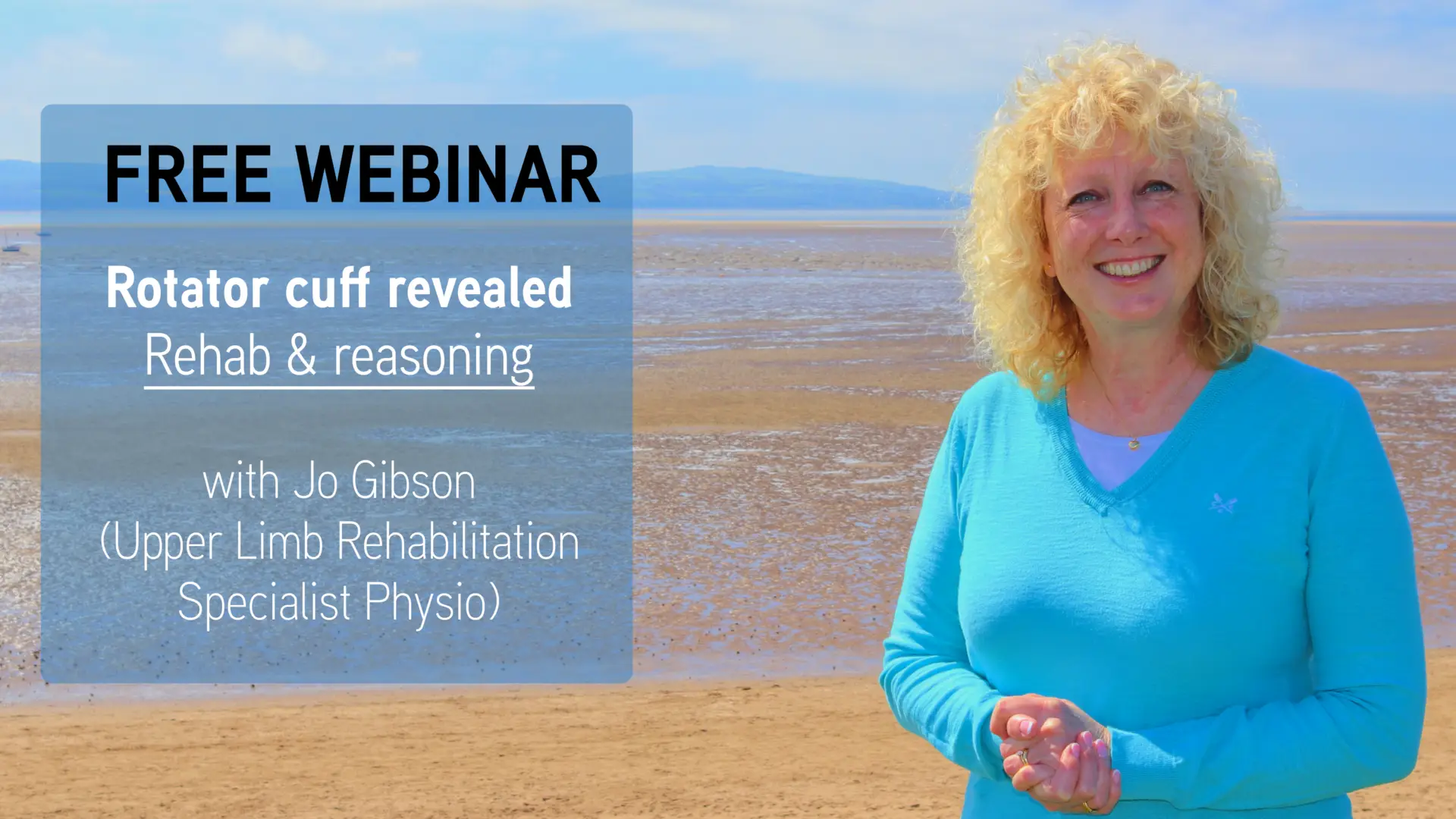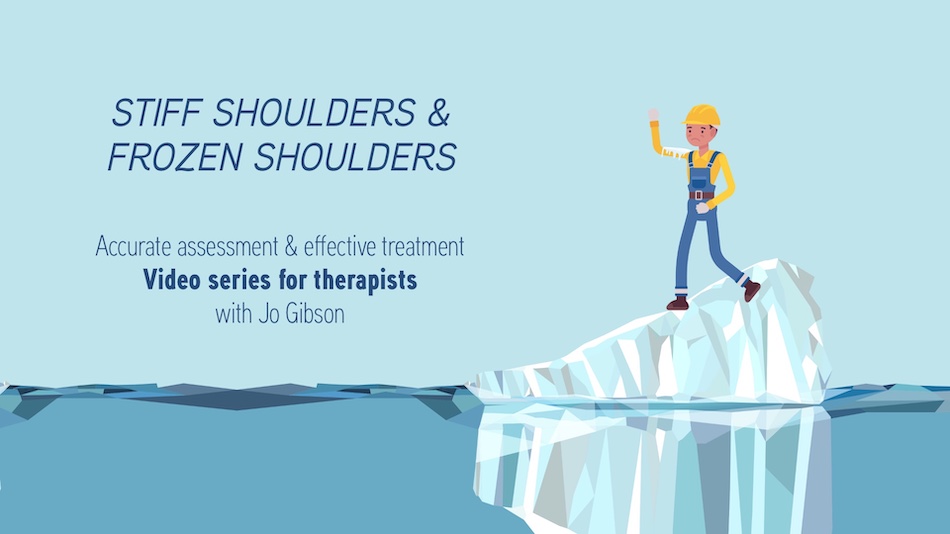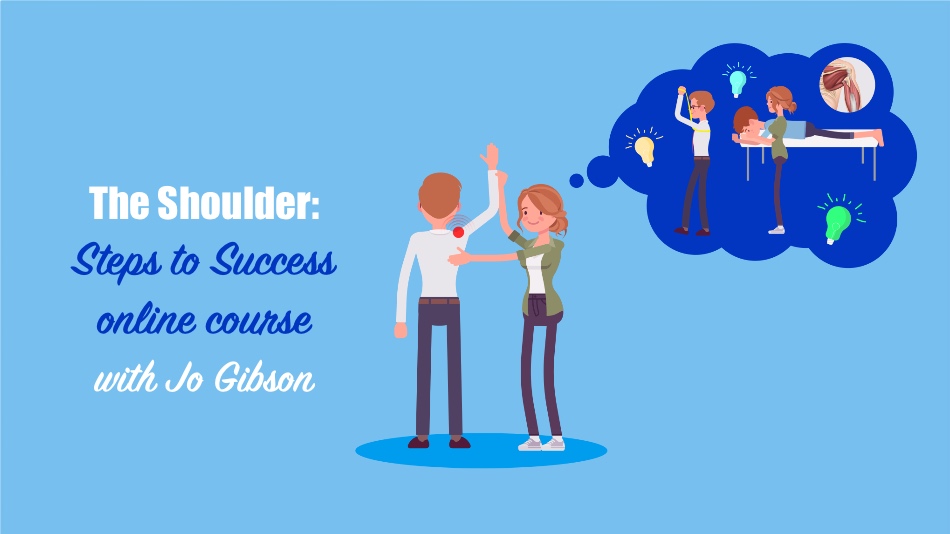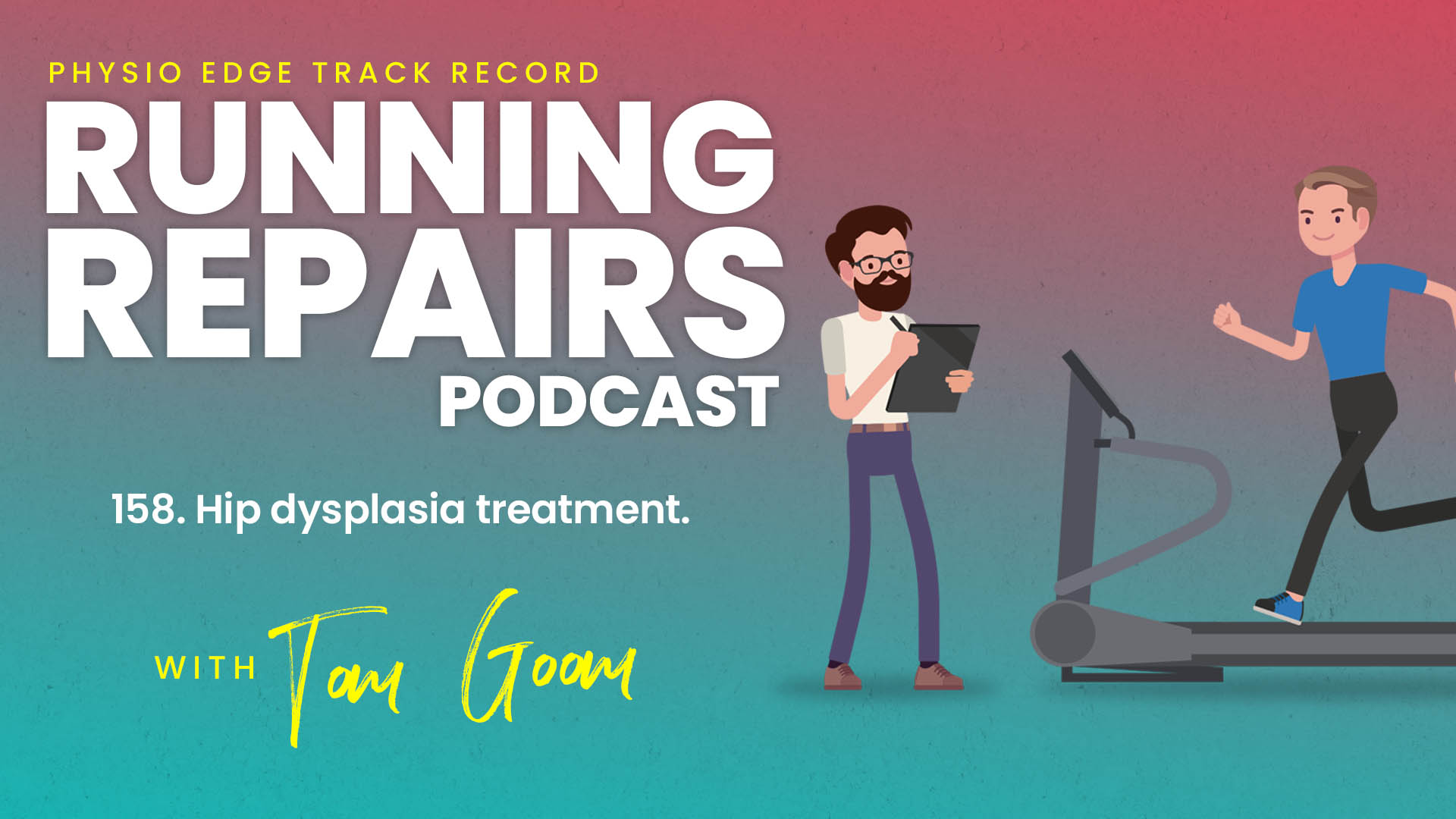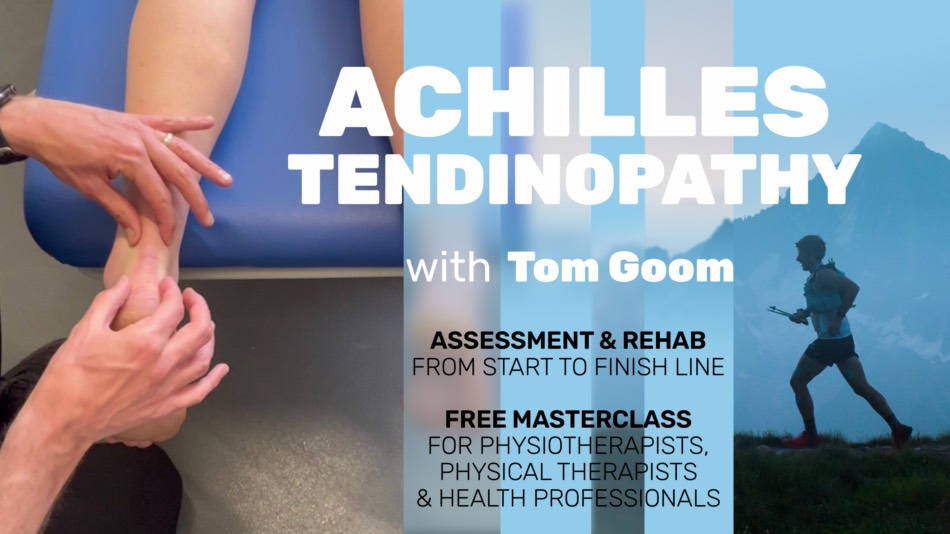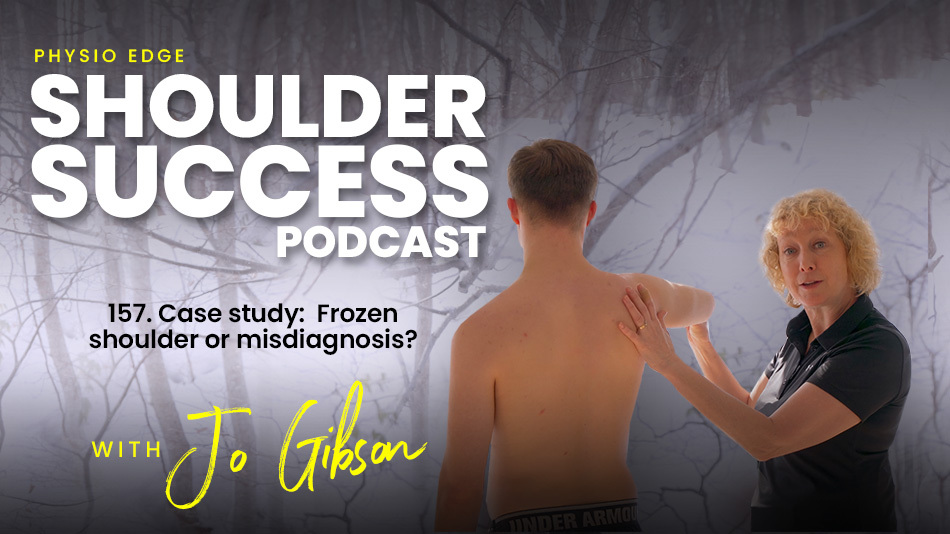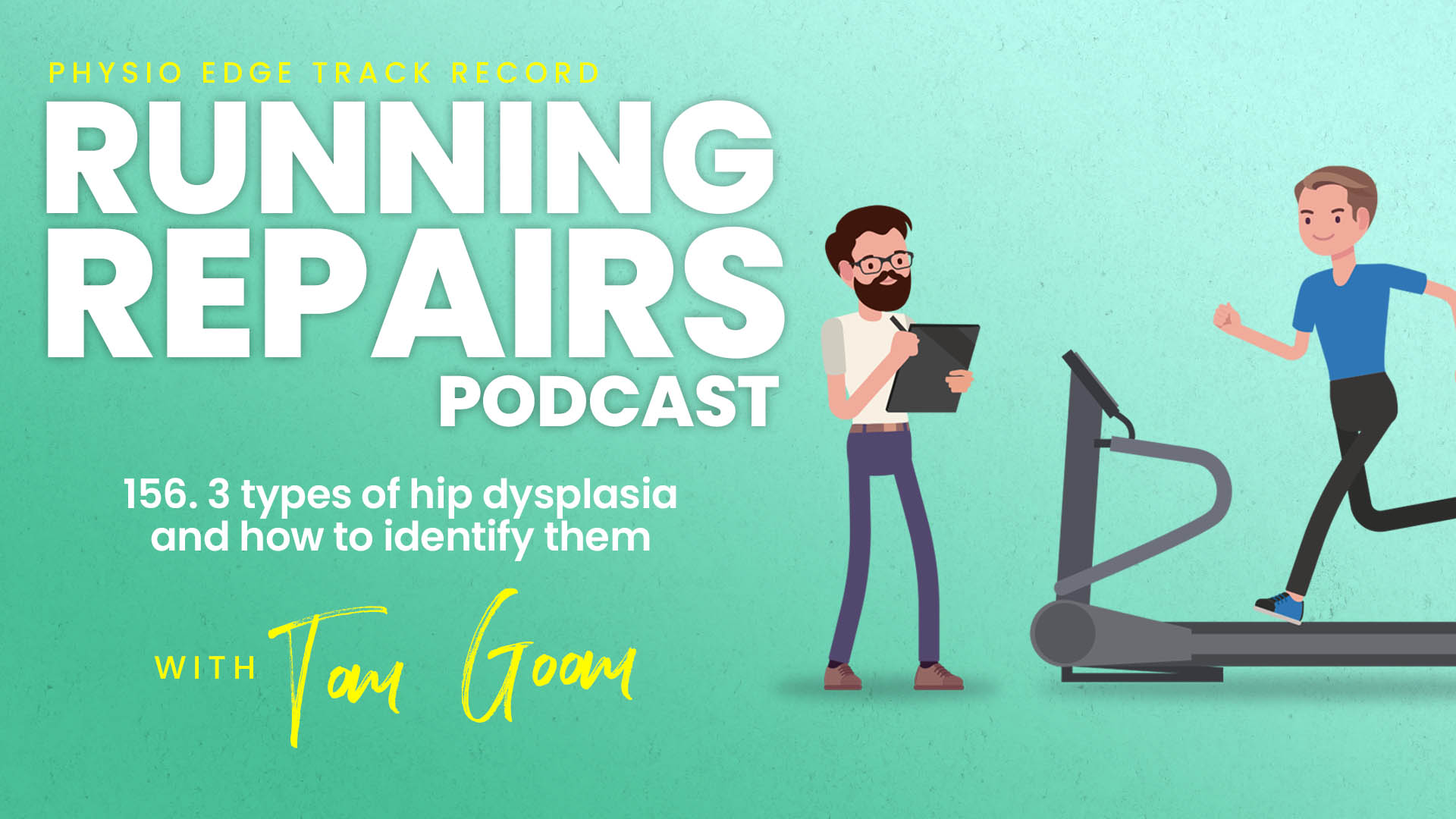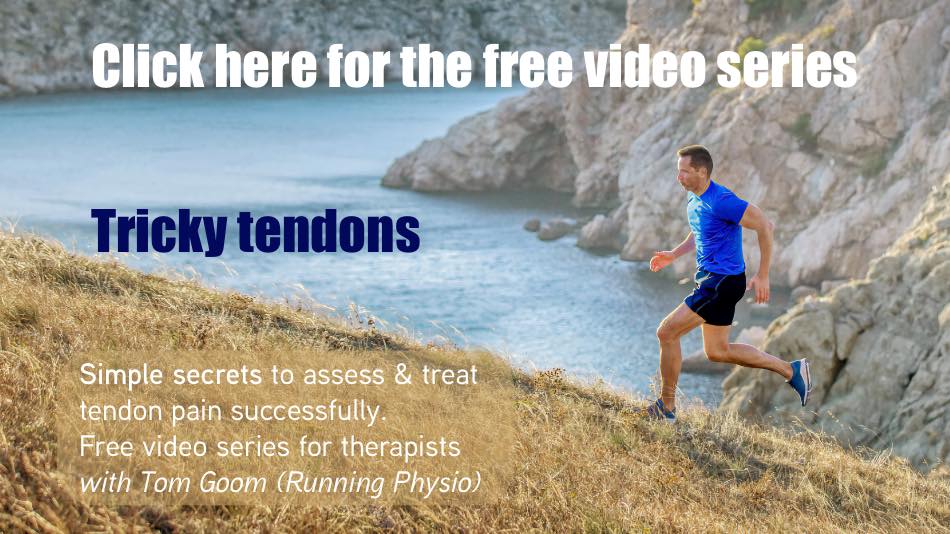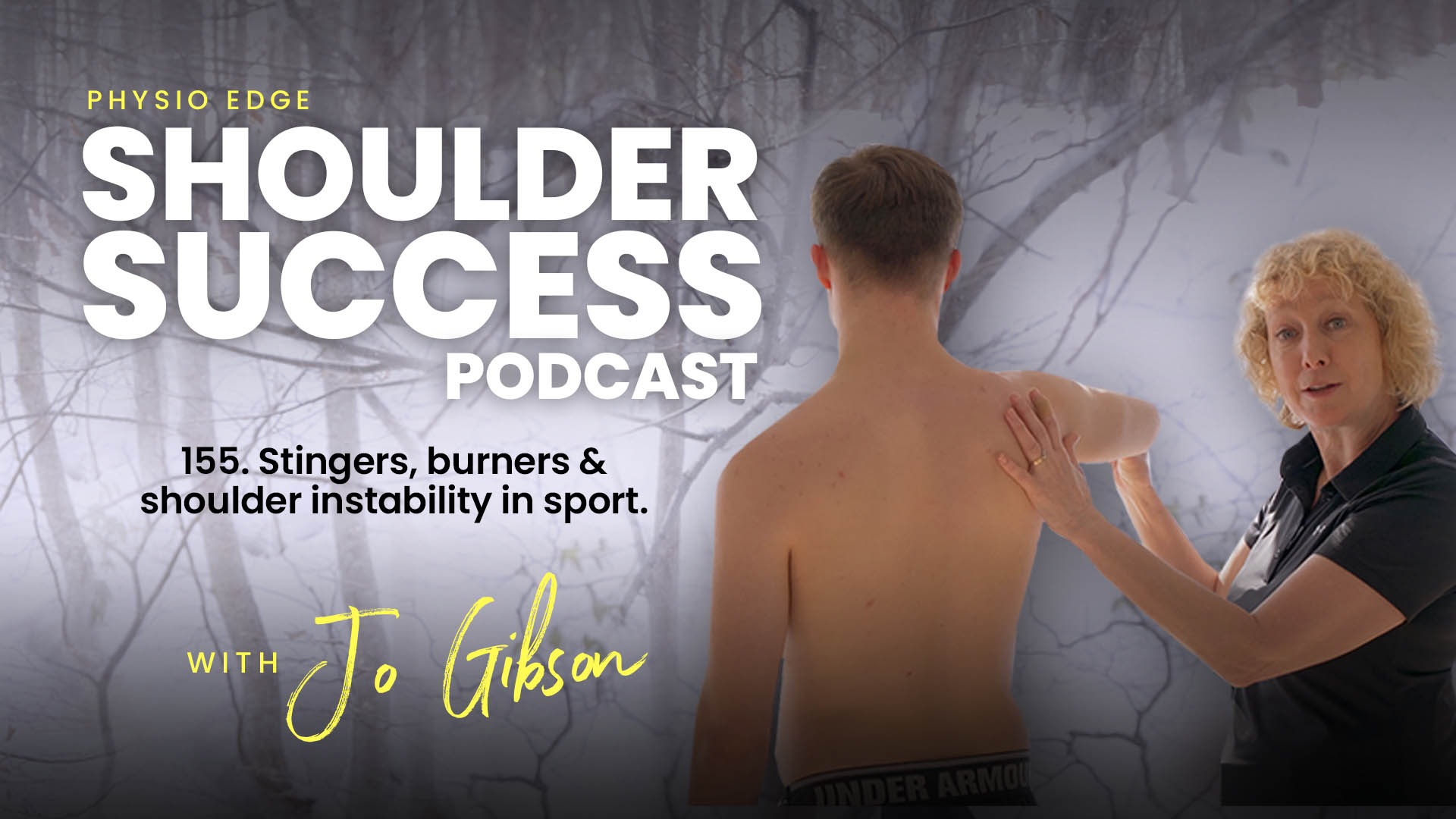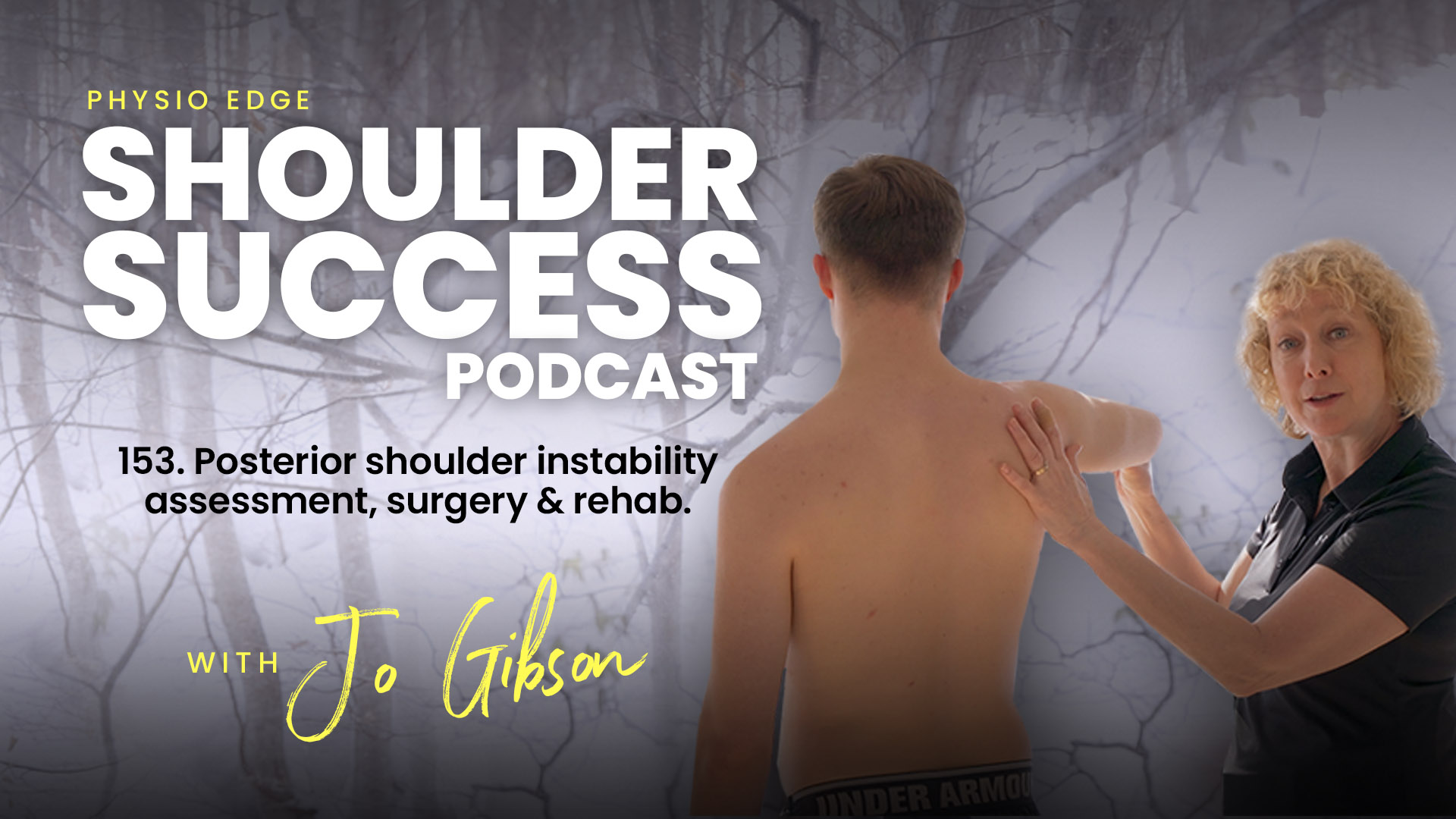Thu, 24 August 2023
Rotator cuff tear arthropathy (RCTA) is a pattern of glenohumeral joint degenerative changes following rotator cuff tears, causing shoulder pain and stiffness. Subscapularis tears can also be involved in RCTA, or a significant cause of shoulder pain and disability. How can you identify RCTA and subscap tears in your shoulder pain patients? How can they be treated, and do these patients respond well to non-surgical management? Find out in this podcast with Jo Gibson (Upper Limb Rehabilitation Specialist Physio). Click here for the free webinar with Jo Gibson “Rotator cuff revealed! Rehab & reasoning”. The handout for this podcast consists of a transcript and research articles referenced in this podcast. Free video series “Frozen shoulder assessment & treatment” with Jo GibsonImprove your frozen shoulder assessment and treatment now with Jo Gibson’s free video series at clinicaledge.co/shoulder Shoulder: Steps to Success online course with Jo GibsonImprove your assessment and treatment of shoulder pain with the Shoulder: Steps to Success online course with Jo Gibson, now available for enrolment at clinicaledge.co/shouldersuccess Free trial Clinical Edge membershipUse a fresh approach to your musculoskeletal and sports injury treatment with a free trial Clinical Edge membership at clinicaledge.co/freetrial Links associated with this episode:
Articles associated with this episode:
Chapters:
|
Mon, 21 August 2023
How can you successfully treat hip pain and instability associated with your patients’ hip dysplasia? Find out the eight critical steps to excellent results with hip dysplasia in this podcast, which is part 3 in this three-part podcast series with Tom Goom (Running Physio). Improve running injury assessment & treatment now with the Running Repairs Online course with Tom Goom at clinicaledge.co/runningrepairs Free video series: Achilles Tendinopathy from start to finish line! with Tom GoomIn this free Masterclass "Achilles tendinopathy: Assessment & rehab from start to finish line" presented by Tom Goom and hosted by Clinical Edge, you’ll discover:
CLICK HERE to register for your free access to this three-part video series with Tom Goom CLICK HERE for your access to three free videos with Tom Goom Links associated with this episode:
Articles associated with this episode:
Chapters:
|
Thu, 17 August 2023
When a patient presents with a potential frozen shoulder, what other differential diagnoses must be considered? Find out in this podcast with Jo Gibson (Upper Limb Rehabilitation Specialist Physio), exploring the case study of a patient diagnosed with “frozen shoulder” with symptoms that don’t quite match a typical frozen shoulder. What’s the diagnosis of this patient’s stiff shoulder? You’ll also discover whether an X-ray or imaging is required when a patient presents with a stiff or frozen shoulder. Click here for the free webinar with Jo Gibson “Rotator cuff revealed! Rehab & reasoning”. The handout for this podcast is the transcript associated with this podcast. Free video series “Frozen shoulder assessment & treatment” with Jo GibsonImprove your frozen shoulder assessment and treatment now with Jo Gibson’s free video series at clinicaledge.co/shoulder Shoulder: Steps to Success online course with Jo GibsonImprove your assessment and treatment of shoulder pain with the Shoulder: Steps to Success online course with Jo Gibson, now available for enrolment at clinicaledge.co/shouldersuccess Free trial Clinical Edge membershipUse a fresh approach to your musculoskeletal and sports injury treatment with a free trial Clinical Edge membership at clinicaledge.co/freetrial Links associated with this episode:
Chapters:
|
Mon, 12 June 2023
Hip dysplasia is a commonly missed cause of hip and groin pain. In this podcast, which is part 2 in the 3 part series with Tom Goom (Running Physio), you’ll discover three types of hip dysplasia that will cause different symptoms and need different treatment (based on Wilkins et al. 2017), how to identify each type, and common exercises and a treatment approach that may be stirring up your patients hip and groin pain. Improve running injury assessment & treatment now with the Running Repairs Online course with Tom Goom at clinicaledge.co/runningrepairs Tricky tendons - Your free video guide to tendinopathy treatment with Tom Goom.Discover a new, effective approach to treatment of tricky tendinopathy presentations, and lesser known tendinopathies with this free video series presented by Tom Goom (Running Physio) and hosted by Clinical Edge. Tom will reveal the secrets to successfully treat tendon pain, and get your patients back to running and sport quickly and easily, without stirring up their pain. Get your free access to this video series now. CLICK HERE for your access to three free videos with Tom Goom CLICK HERE for your access to three free videos with Tom Goom Links associated with this episode:
Articles associated with this episode:
Chapters:
|
Fri, 2 June 2023
Stingers or burners are a burning or stinging pain, often with some paraesthesia and occasionally weakness, often occurring in impact sports such as rugby or American football. When your patients present with neck and arm symptoms, how can you differentiate a stinger or burner from a C/sp fracture, discogenic symptoms or nerve root compression, which all require very different treatment? How should you manage patients with one-off or repeated stingers or burners? Find out in this podcast with Jo Gibson (Upper Limb Rehabilitation Specialist Physio). The handout for this podcast consists of a transcript and articles referenced in the podcast. Free video series “Frozen shoulder assessment & treatment” with Jo GibsonImprove your frozen shoulder assessment and treatment now with Jo Gibson’s free video series at clinicaledge.co/shoulder Shoulder: Steps to Success online course with Jo GibsonImprove your assessment and treatment of shoulder pain with the Shoulder: Steps to Success online course with Jo Gibson, now available for enrolment at clinicaledge.co/shouldersuccess Free trial Clinical Edge membershipUse a fresh approach to your musculoskeletal and sports injury treatment with a free trial Clinical Edge membership at clinicaledge.co/freetrial Links associated with this episode:
Articles associated with this episode:
Chapters:
|
Fri, 19 May 2023
Hip dysplasia is a commonly missed cause of hip and groin pain, catching, clicking, locking or popping, resulting from lack of coverage of the femoral head by the acetabulum. How can you identify hip dysplasia in your hip or groin pain patients, and avoid misdiagnosing it as iliopsoas or adductor related groin pain? What signs and symptoms will your patients reveal in their subjective history that’ll help you identify this condition? Find out the key signs and symptoms of hip dysplasia in this podcast with Tom Goom (Running Physio). Improve running injury assessment & treatment now with the Running Repairs Online course with Tom Goom at clinicaledge.co/runningrepairs Tricky tendons - Your free video guide to tendinopathy treatment with Tom Goom.Discover a new, effective approach to treatment of tricky tendinopathy presentations, and lesser known tendinopathies with this free video series presented by Tom Goom (Running Physio) and hosted by Clinical Edge. Tom will reveal the secrets to successfully treat tendon pain, and get your patients back to running and sport quickly and easily, without stirring up their pain. Get your free access to this video series now. CLICK HERE for your access to three free videos with Tom Goom CLICK HERE for your access to three free videos with Tom Goom Links associated with this episode:
Articles associated with this episode:
Chapters:
|
Fri, 21 April 2023
Posterior shoulder instability can occur after a fall onto an outstretched arm, or diving and hitting the ground with your arm (like diving to score a try in rugby), injuring the posterior labrum and/or the glenohumeral joint. Unlike anterior shoulder instability, patients with posterior shoulder instability may not have have a feeling of instability, but may just experience pain, fatigue and weakness. How can you identify posterior shoulder instability in your shoulder pain patients? What does your rehab for posterior shoulder instability need to include? Find out in this podcast with Jo Gibson (Upper Limb Rehabilitation Specialist Physio). The handout for this podcast consists of a transcript and articles referenced in the podcast. Free video series “Frozen shoulder assessment & treatment” with Jo GibsonImprove your frozen shoulder assessment and treatment now with Jo Gibson’s free video series at clinicaledge.co/shoulder Shoulder: Steps to Success online course with Jo GibsonImprove your assessment and treatment of shoulder pain with the Shoulder: Steps to Success online course with Jo Gibson, now available for enrolment at clinicaledge.co/shouldersuccess Free trial Clinical Edge membershipUse a fresh approach to your musculoskeletal and sports injury treatment with a free trial Clinical Edge membership at clinicaledge.co/freetrial Links associated with this episode:
Articles associated with this episode:
Chapters:
|
Mon, 13 March 2023
After injury or surgery, a lot of runners are told to stop running for different reasons. How can you answer patients that ask if they need to give up running for good? When should patients consider permanently stopping running? Find out in this podcast with Tom Goom (Running Physio). Improve running injury assessment & treatment now with the Running Repairs Online course with Tom Goom at clinicaledge.co/runningrepairs Tricky tendons - Your free video guide to tendinopathy treatment with Tom Goom.Discover a new, effective approach to treatment of tricky tendinopathy presentations, and lesser known tendinopathies with this free video series presented by Tom Goom (Running Physio) and hosted by Clinical Edge. Tom will reveal the secrets to successfully treat tendon pain, and get your patients back to running and sport quickly and easily, without stirring up their pain. Get your free access to this video series now. CLICK HERE for your access to three free videos with Tom Goom Links associated with this episode:
Chapters: 03:25 - Stop running permanently 8:15 - Safe to continue running? 10:05 - Post ACL surgery 11:22 - Knee OA 13:27 - Running rehab plan 16:44 - Key takeaways |
Fri, 3 March 2023
Will strength training help your patients reduce their risk of running injury and improve their running performance? Find out what the latest research reveals in this Physio Edge Track record: Running repairs podcast with Tom Goom (Running Physio), as you discover:
Improve running injury assessment & treatment now with the Running Repairs Online course with Tom Goom at clinicaledge.co/runningrepairs Tricky tendons - Your free video guide to tendinopathy treatment with Tom Goom.Discover a new, effective approach to treatment of tricky tendinopathy presentations, and lesser known tendinopathies with this free video series presented by Tom Goom (Running Physio) and hosted by Clinical Edge. Tom will reveal the secrets to successfully treat tendon pain, and get your patients back to running and sport quickly and easily, without stirring up their pain. Get your free access to this video series now. CLICK HERE for your access to three free videos with Tom Goom Links associated with this episode:
Article associated with this episode:Chapters: 02:22 - Research study 04:39 - Results 07:47 - Training program |
Fri, 24 February 2023
Marathon runners often come to us with pain, but also they need to build up their mileage in preparation for one of the most challenging events in endurance sport. They're trying to do more when their body may be telling them they need to be doing less. How do we manage their symptoms, and guide them up to the marathon itself? Find out in this podcast with Tom Goom (Running Physio). Improve running injury assessment & treatment now with the Running Repairs Online course with Tom Goom at clinicaledge.co/runningrepairs Tricky tendons - Your free video guide to tendinopathy treatment with Tom Goom.Discover a new, effective approach to treatment of tricky tendinopathy presentations, and lesser known tendinopathies with this free video series presented by Tom Goom (Running Physio) and hosted by Clinical Edge. Tom will reveal the secrets to successfully treat tendon pain, and get your patients back to running and sport quickly and easily, without stirring up their pain. Get your free access to this video series now. CLICK HERE for your access to three free videos with Tom Goom
Links associated with this episode:
Chapters: 00:02:40 - Marathon training phases 00:09:08 - Training priority 00:11:41 - Manageable goals 00:12:27 - Discussing risks 00:13:59 - Short and simple rehab 00:15:23 - Hands-on treatment 00:17:17 - Case study
Direct download: 150._Top_tips_for_treating_marathon_runners_with_Tom_Goom.mp3
Category:general -- posted at: 12:29pm AEST |
Fri, 3 February 2023
How can you settle symptoms and make progress with patients, when pain is a significant barrier to performing the rehab that will help them get back to the things they want to do? Discover the five step process in this podcast with Tom Goom (Running Physio) to settle patients symptoms, overcome this barrier of pain, and help patients make progress with their rehab.
Improve running injury assessment & treatment now with the Running Repairs Online course with Tom Goom at clinicaledge.co/runningrepairs Tricky tendons - Your free video guide to tendinopathy treatment with Tom Goom.Discover a new, effective approach to treatment of tricky tendinopathy presentations, and lesser known tendinopathies with this free video series presented by Tom Goom (Running Physio) and hosted by Clinical Edge. Tom will reveal the secrets to successfully treat tendon pain, and get your patients back to running and sport quickly and easily, without stirring up their pain. Get your free access to this video series now. CLICK HERE for your access to three free videos with Tom Goom CLICK HERE for your access to three free videos with Tom Goom Links associated with this episode:
Direct download: 149._How_to_settle_symptoms_and_make_progress_when_pain_is_a_barrier_with_Tom_Goom.mp3
Category:general -- posted at: 4:29pm AEST |
Physio Edge podcast

Categories
generalArchives
AprilMarch
February
August
June
May
April
March
February
November
October
July
April
March
February
December
August
July
April
March
February
December
October
September
June
May
April
March
February
January
December
October
August
June
May
April
March
January
December
October
September
August
July
June
May
February
January
December
November
October
August
June
May
April
March
February
November
October
September
August
June
May
April
March
February
November
September
August
July
June
April
March
February
January
December
October
July
June
May
March
December
September
August
June
April
December
September
August
June
April
February
January
December
November
October
September
August
| S | M | T | W | T | F | S |
|---|---|---|---|---|---|---|
| 1 | ||||||
| 2 | 3 | 4 | 5 | 6 | 7 | 8 |
| 9 | 10 | 11 | 12 | 13 | 14 | 15 |
| 16 | 17 | 18 | 19 | 20 | 21 | 22 |
| 23 | 24 | 25 | 26 | 27 | 28 | 29 |
| 30 | ||||||
Syndication

